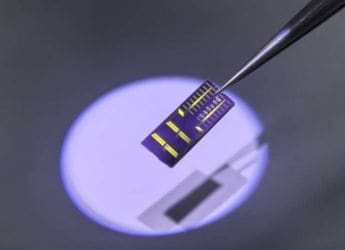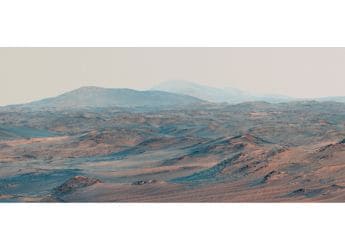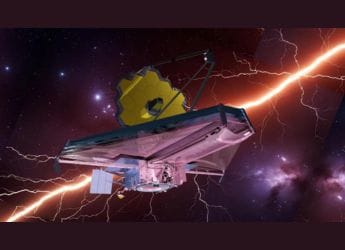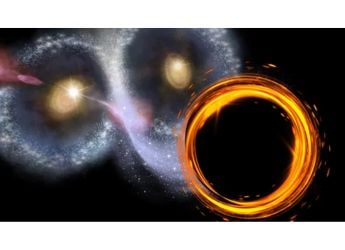- Home
- Science
- Science News
- Earendel: JWST Suggests the Most Distant Star May Be a Star Cluster
Earendel: JWST Suggests the Most Distant Star May Be a Star Cluster
JWST observations challenge the idea that Earendel is a lone massive star. Instead, it may be a compact star cluster magnified by gravitational lensing.

Photo Credit: NASA/ESA/CSA/STScI
JWST reveals Earendel may be a distant star cluster
The most distant object in the universe ever discovered, Earendel, might not in fact be a lone star as scientists initially assumed. It was spotted on 2022 by the Hubble Space Telescope and appeared to have evolved just 900 million years after the Big Bang, at a time when the universe was a mere infant. But fresh data from the newly launched James Webb Space Telescope (JWST) indicate that Earendel may not be a massive solitary star, but rather a small group of them — a star cluster.
How We Can See It
As per Live Science report , Earendel is located in the Etendeka galaxy of the Sunrise Arc, some 12.9 billion light-years from Earth. We can see it thanks to the effect of a special one known as gravitational lensing. The lensing occurs when a massive galaxy cluster warps and amplifies the light from objects situated much farther away. In this one, Earendel's light was 4,000 times as bright, shining in a way that astronomers would be able to catch it. Such rare alignments lead scientists to wonder if the object is actually more than a single star.
What JWST Found
Preliminary data from JWST had indicated that Earendel might be a very hot and massive star that was shining a million times as bright as the sun, and possibly was even one half of a pair of stars. But fresh spectroscopic data from JWST's NIRSpec instrument resemble the pattern we see in star clusters more closely. That means Earendel might actually consist of many stars burning in unison.
Debate Among Astronomers
This new idea is not accepted by all scientists. Star clusters and individual stars can appear nearly the same, in JWST's resolution,” said Brian Welch, the leader of the team that first found Earendel. He thinks we need more information before anyone can say for sure.
The Next Step
To settle the matter, scientists are trying to watch Earendel for any microlensing, minuscule changes in brightness that could reveal how big it is. A future study with JWST of Earendel may potentially reveal if it is a single star or a star cluster.
Get your daily dose of tech news, reviews, and insights, in under 80 characters on Gadgets 360 Turbo. Connect with fellow tech lovers on our Forum. Follow us on X, Facebook, WhatsApp, Threads and Google News for instant updates. Catch all the action on our YouTube channel.
- Samsung Galaxy Unpacked 2025
- ChatGPT
- Redmi Note 14 Pro+
- iPhone 16
- Apple Vision Pro
- Oneplus 12
- OnePlus Nord CE 3 Lite 5G
- iPhone 13
- Xiaomi 14 Pro
- Oppo Find N3
- Tecno Spark Go (2023)
- Realme V30
- Best Phones Under 25000
- Samsung Galaxy S24 Series
- Cryptocurrency
- iQoo 12
- Samsung Galaxy S24 Ultra
- Giottus
- Samsung Galaxy Z Flip 5
- Apple 'Scary Fast'
- Housefull 5
- GoPro Hero 12 Black Review
- Invincible Season 2
- JioGlass
- HD Ready TV
- Laptop Under 50000
- Smartwatch Under 10000
- Latest Mobile Phones
- Compare Phones
- OnePlus 15R
- Realme Narzo 90x 5G
- Realme Narzo 90 5G
- Vivo S50 Pro Mini
- Vivo S50
- OPPO Reno 15c
- Redmi Note 15 5G
- Redmi Note 15 Pro 5G
- Asus ProArt P16
- MacBook Pro 14-inch (M5, 2025)
- Infinix Xpad Edge
- OnePlus Pad Go 2
- OnePlus Watch Lite
- Just Corseca Skywatch Pro
- Acerpure Nitro Z Series 100-inch QLED TV
- Samsung 43 Inch LED Ultra HD (4K) Smart TV (UA43UE81AFULXL)
- Asus ROG Ally
- Nintendo Switch Lite
- Haier 1.6 Ton 5 Star Inverter Split AC (HSU19G-MZAID5BN-INV)
- Haier 1.6 Ton 5 Star Inverter Split AC (HSU19G-MZAIM5BN-INV)












